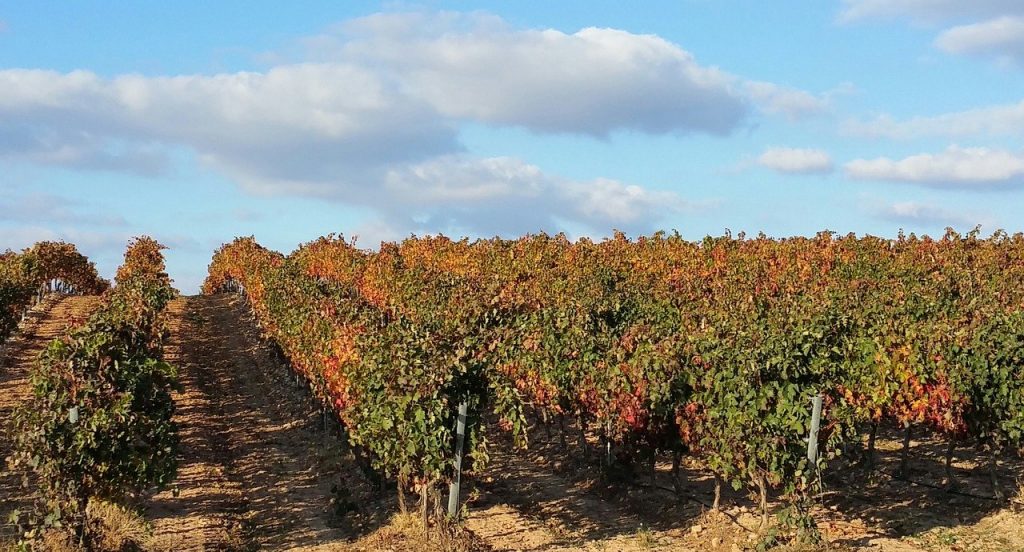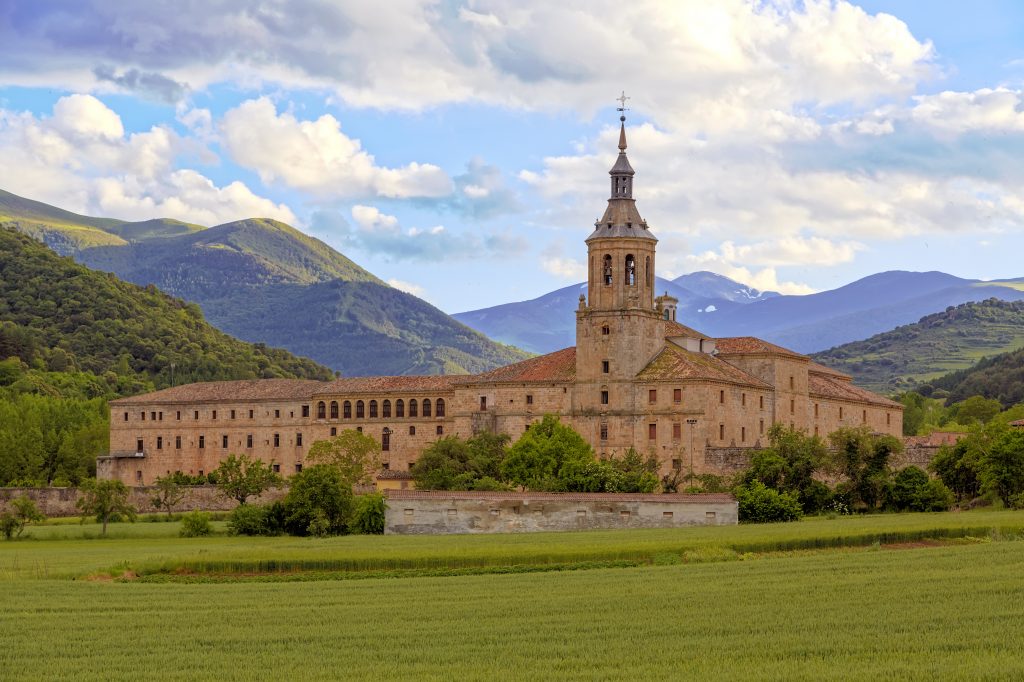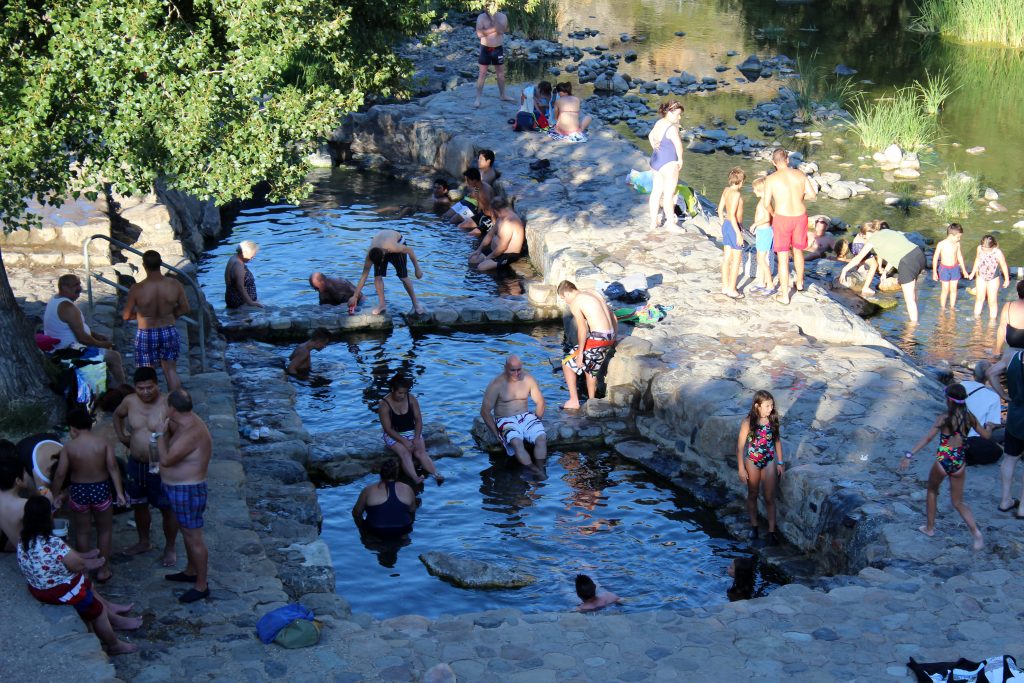Spain’s smallest region – La Rioja. Known worldwide for its wines, there is plenty more to see and do in this attractive region. Read on!
Spain’s smallest region is known for its wine. Moreover, La Rioja has over 500 wineries and naturally that forms a large part of its culture.
But there’s a lot more to this central region. As well as wine tasting, there are a range of activities from horse-riding, star-gazing, thermal spas, hot-air ballooning and pretty towns.
Rioja is also the official home of the Spanish language. Furthermore, it was there the first written words in the language were put down.
And then there are the dinosaurs…
Wine Tasting

The Qualified Designation of Origin for Rioja (DOCa Rioja) is the oldest in Spain. With hundreds of wineries in the area, it’s a worldwide reference point for oenology. One hundred of these can be visited in order to immerse yourself in wine culture.
San Asensio is La Rioja in miniature. This village has the highest number of wineries in the region. Furthermore, the landscape formed by the river offers beautiful panoramic views.
For organic wine, head to Las Cepas which in 2003 dedicated itself to organic wine. The family winery has its vineyards on rocky terrain surrounded by a rich biodiversity which naturally helps with pest control.
Calahorroa
The main town in Lower Rioja, Calahorra stands on a promontory overlooking the fertile plain of Cidacos. In the Muslim old town, there is a Roman arch and the 16th century church of San Andrés. In Plaza del Raso, a former Roman forum, is the church of Santiago, the finest example of La Rioja’s Neoclassic style.
The cathedral of Calahorra stands where two Roman legionaries were decapitated. It has a turbulent history, but its current look is thanks to the work started in the 14th century. Located at the edge of the city, it is Gothic in style, with a Baroque interior.
San Millán de la Cogolla

In the middle of the Cárdenas river valley is San Millán de la Cogolla, a Rioja town founded by the saint of the same name. It is a notable stop on the Pilgrim’s Route to Santiago de Compostela.
The deep-rooted monastic tradition of the town can be seen in the beautiful collection of historic buildings, among them the Monasteries of Suso and Yuso, both declared World Heritage Sites.
San Millán de la Cogolla is important for its status as the cradle of the Spanish language. The first texts in Spanish were written here. The Yuso Monastery – the “lower one” – is larger and built to enlarge the Suso Monastery in the 11th century. Its impressive library holds a large part of the history of Castilian Spanish and has more than 10,000 volumes, including very valuable editions.
In the footsteps of dinosaurs
More than 120 million years ago, dinosaurs inhabited what is now La Rioja. In fact, this area of Spain is one of the places with the most dinosaur ichnites (fossil footprints) in the world. There are around 140 sites in 20 municipalities.
For family days out, travel the “Dinosaur Route”, which passes through different sites where you can discover thousands of footprints. There also life-size reproductions of the dinosaurs that walked La Rioja.
Stargazing in a Starlight Tourist Destination
The Valles del Leza, Jubera, Cidacos and Alhama Biosphere Reserve is recognised as a Starlight Tourist Destination. It is one of the best areas in Spain for stargazing thanks to its distance from large population centres, its terrain and climate.
Gaze at the heavens from the archaeological site of Contrebia Leucade in Aguilar del Río Alhama and discover the myths of Celtiberian culture. Or take your pick from the dolmen of Collado del Mayo in Trevijano, the sinkholes of Zenzano, or Luna Castle in Cornago.
The “Starry Nights” programme, usually in the summer months, provides guided observations. Find out more here.
Soak in thermal spas

The Arnedillo spa dates back to Roman times. In fact, it has a Roman thermal bath, plus a wave pool and an outdoor hot springs park that takes advantage of the hot mineral and medicinal waters. Apply thermal mud, a treatment that has made the spa famous. It is the only one in Spain that still carries out the process of maturing the mud in a natural way.
Alternatively, there is the spa in Grávalos, with spectacular views over the valley, built over a spring of medicinal mineral waters also used by the Romans. Try their hydroenological experience: an invigorating massage, accompanied by mud mixed with wine, which has an antioxidant effect. Then add a little more antioxidant with a tasting of a local wine!


